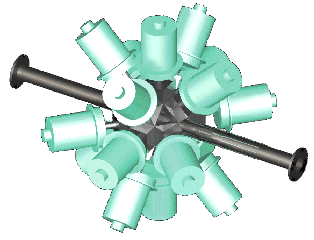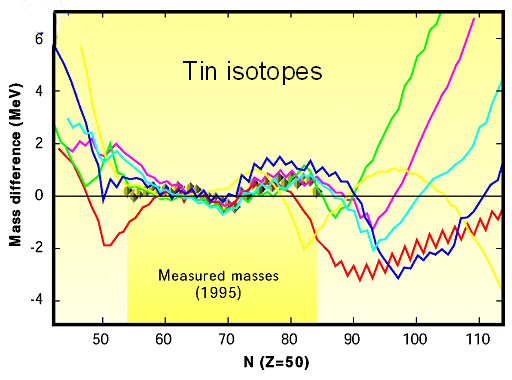
| Nuclear Physics Group |
Physics Department
Conferences
Seminars
Useful Links
IT Resources
Feedback:
support@ns.ph.liv.ac.uk
|
Gamma-ray spectroscopy with radioactive ion beams 
The study of excited states of nuclei near 100Sn, using gamma-ray spectroscopy, will produce important information on residual interactions and correlations for systems near the doubly closed shell. As nucleons are added to this system, strong octupole correlations should occur for identical proton and neutron states, a hitherto unexplored scenario. The study of neutron deficient nuclei near N=Z in the mass 40...80 region and approaching N=Z in the mass 100...140 region will bring interesting new physics. The number of neutrons and protons is such that the valence nucleons occupy the same orbitals. Information on neutron-proton pairing, single particle orbitals far from stability and new regions of deformation can be obtained. For the study of these nuclei, beams of post-accelerated radioactive ions are being exploited. At GANIL, these ions are accelerated in SPIRAL and are then used to produce compound nuclei that are studied using EXOGAM, a highly efficient gamma-ray spectrometer, and VAMOS, a versatile recoil spectrometer. Another new technique being developed for experiments at SPIRAL, REX-ISOLDE (CERN) and the FRS at GSI is the Coulomb excitation of the exotic nuclei as they pass through a target foil at both sub-Coulomb and relativistic energies. Mass Measurements at GANIL 
The ground-state mass of a nucleus, and thus its binding energy, is one of the most fundamental nuclear properties, since all the information about the strong force acting in such a system of nucleons is contained in this quantity. It is observed that N = Z nuclei are more bound than their neighbours. This empirical fact is known as the Wigner term in mass formulae, and cannot be properly explained by modern theories. The study of the residual interaction between the last proton and the last neutron, which plays a very important role in the structure of nuclei, is directly accessible from masses through double binding-energy differences. Ground state masses of N = Z nuclei are scarcely and poorly known above 62Ga. New precise measurements around the N = Z region with Z ~ 30 would allow the study of the A-dependence of the neutron-proton strength and provide a simple and clear signature of the Wigner spin-isospin symmetry. A new experimental programme has recently started at GANIL to extend the measurements to N = Z = 40-50, up to the doubly-magic 100Sn region. These very challenging mass-measurement experiments are performed by means of an original direct time-of-flight technique using the CSS2 cyclotron as a high-resolution spectrometer. The exotic nuclei are produced by fusion-evaporation from a heavy-ion primary beam delivered by the first GANIL cyclotron, CSS1, impinging on a target located between the two cyclotrons. A new method is being developed for the measurement of the masses of very exotic nuclei, with a precision of better than 10-6, using the new CIME cyclotron of SPIRAL. Measurements can be foreseen with the CIME and CSS2 cyclotrons, which are complementary to the mass measurement programmes at ISOLTRAP and MISTRAL at ISOLDE or ESR at GSI. The aim is to perform high-precision mass measurements of some of the most exotic nuclei that are key to our understanding of nuclear structure. |
Highlights of Recent Results
Click on the green buttons to follow the links.

|
Mass Measurememnts of Exotic Nuclei at GANIL |
| © University of Liverpool | Disclaimer. | |